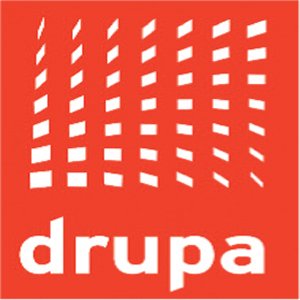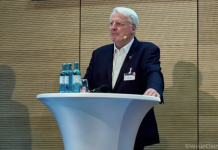Actually there is no centre-stage at drupa for packaging. The 17 halls are spread out and although the organizers presented packaging award exhibitions and high level discussions on the concepts and future considerations for the packaging industry, the subject is too large to be contained just in the centre of the stage. Packaging has always been
an integral part of drupa – especially since it has been the key platform for multicolor offset presses and monocarton converting. drupa has also had exhibitors such as W&H and Comexi, Uteco and Bobst and many others including the electronic gravure and flexo prepress suppliers for the longest time.

What was different at this drupa was the quality of interest in packaging from the Indian print industry – our digital, commercial and packaging printers were amongst the biggest buyers at the show. Digital and commercial printers are looking at getting into carton packaging – but from their point of view it is foolish to compete on volumes and prices with the big boys who are established in that segment. It is not easy to digest two 6 or 7-color offset presses, three diecutters and two folder gluers in one go, so from the digital and commercial printer’s point of view it makes sense to add value and creativity and not stay simply in cartons. It makes sense to purchase Scodix or other enhancement machines – decoration and enhancement can add value to many digital and commercial products and also to cartons. Thus at this drupa, you had Indian printers and packaging companies lining up to sign up for Scodix Ultra and the new E106 and also for 3D printers and laser die-cutters.
New platforms for creativity
With 25 Scodix Ultra size machines, India is already the largest global customer-base for this technology. And with about another two dozen serious expressions of interest including signings and letters of intent, Indians were the largest Scodix customers at drupa. These intentions or orders include more than one E106 including the first one bought by a packaging printer, Nutech Packagings. The deal is that a Scodix Ultra will soon come into Nutech’s brand new Greater Noida plant and then in the third quarter of 2017, it will be replaced by the Scodix E106. Scodix is making the same offer to all purchasers of the E106 – that it will take back the smaller Ultra when the E106 is installed.
Laser cutting
As far as laser die-cutting, here also the Indians have become relatively early adopters. At drupa Hans Gronhi showed several laser diecutters including its largest system. Monotech Systems sold one of the smaller machines, the Hans Gronhi 1390 laser diecutter to a printer in South India. But there is no question that the breakthrough was in the Highcon where several Indian signings for the Pulse and at least one for the Highcon Euclid took place. These machines are being purchased not as replacements for autoplaten diecutters but as new platforms for creativity and for that often used expression – value addition. There were lasers all over drupa including at Hunkeler for its paper finishing and the Polar laser diecutter at the Heidelberg stand with a robot for picking and stacking the blanks. You can expect laser cutting to increasingly play its role in labels and packaging – and not least – in sculpture.
Multicolor offset presses
Some of the offset press signings announced at drupa were actually on the high seas before they were made public at the show. Nevertheless Heidelberg announced two CX 102 presses purchased by Parksons Packagings that include the innovations shown by Heidelberg at drupa. According to Peter Rego, general manager of Heidelberg India, “The newly signed machines will be Parksons Packaging’s fourth and fifth brand new CX 102 presses to be installed at multiple locations in the last two years.”
Amongst KBA’s packaging press sales at drupa were those of three Rapida 106 presses to TCPL Packaging including a press to run at 20,000 sheets an hour. With a total of 26 printing and finishing units these presses will join the four medium-format Rapidas with six to eight inking units, coater and logistics systems already in operation at various TCPL plants in India. The first new Rapida for TCPL’s Silvassa plant features seven inking units and two coaters, full UV with pile logistics is to be installed this autumn. A 6 and a 7-color Rapida 106 with coater are to be installed in early 2017.
25 new carton packaging presses this year
Actually we know of several other packaging press deals and we expect that in a country that will import around 90 to 100 multicolor presses in the April 16 to March 17 financial year, there will about 25 packaging 6 and 7-color packaging presses. Of these about a third will be highly configured full UV and highly automated 6, 7, and 8-color presses.
While KBA and Heidelberg are expected to dominate the sales of the multicolor packaging press installs we expect Komori to also continue to make inroads in this segment with several 6 and 7-color presses. Manroland sheetfed which had a spectacular drupa while demonstrating its Evolution 700 printing on paperboard and RMGT (Mitsubishi) should also re-enter the Indian packaging market although RMGT has already installed a 7-color full UV 36-inch press in East India last year.
Diecutting and folding gluers
The movement of the print industry to packaging was also visible in the realignment of the converting scene at drupa with several new alternatives coming especially from Asia. Notably Heidelberg showed the Masterwork autoplate diecutters with advanced features at its stand. The company sees Masterwork as a collaborator and has been able to share some its converting experience and knowhow to the Chinese manufacturer that was an important part of its drupa exhibit. KBA is now committed to selling the Iberica diecutters and Komori is also in the converting game.
In the Indian market, in the current financial year we expect the installation of about 40 new autoplaten diecutters in the 40-inch range, in addition to the 10 to 15 used machines that come in each year. Of these, 20 will be Bobst autoplatens, 10 will be Bobst Eterna machines built in China and another ten will likely come from other manufacturers. The Indian manufacturers Maxima and Autoprint can also be expected to add another two dozen diecutters mostly in smaller sizes to these installations. New folder gluers installations in the country including Bobst manufactured machines in Pune and those from China and Taiwan and India should be in the range of about sixty machines this year.
Digital corrugated presses
 Durst showcased its first single-pass industrial inkjet press for the corrugated segment, the Rho 130 SPC with print speeds of up to 9,350 square meters per hour at widths of 1300 mm and a resolution of 800 dpi for board of up to 12 mm thick. Screen and BHS Corrugated announced the establishment of a joint-venture, Screen GP (Screen Graphic and Precision Solutions) which together with Screen subsidiary Inca Digital is to develop a high-volume inline digital printing solution for the corrugated board industry. HP didn’t have its 15000 press for corrugated on the showfloor, but its T1100S inkjet press for corrugated developed with KBA was at the KBA stand.
Durst showcased its first single-pass industrial inkjet press for the corrugated segment, the Rho 130 SPC with print speeds of up to 9,350 square meters per hour at widths of 1300 mm and a resolution of 800 dpi for board of up to 12 mm thick. Screen and BHS Corrugated announced the establishment of a joint-venture, Screen GP (Screen Graphic and Precision Solutions) which together with Screen subsidiary Inca Digital is to develop a high-volume inline digital printing solution for the corrugated board industry. HP didn’t have its 15000 press for corrugated on the showfloor, but its T1100S inkjet press for corrugated developed with KBA was at the KBA stand.
EFI also announced the development of a single-pass inkjet press for corrugated, the Nozomi C18000 with LED imaging for boards of up to 1.8 x 3 metres. With a projected throughput of up to 8,100 square metres an hour, i.e., some 9,000 boards of 90 x 60 cm per hour can be printed.
Bobst which has built its digital inkjet corrugated press did not have it at the stand partly because the press is 60 metres long. Developed with Kodak’s continuous inkjet technology this press will most likely be shown running by Bobst later this year. Bobst’s digital inkjet corrugated press was presented with the EDP design award at drupa 2016.
Heidelberg at drupa
At Heidelberg’s drupa stand the concept of an automated sheetfed offset press that simply lines up the jobs in the pipeline and performs all the makeready tasks itself was demonstrated. The new XL series with 3,000 sensors in the press is built on the one hand to run continuously – and on the other to monitor minute performance data and analyze it in such a way that potential problems can be anticipated and hence rectified leading to huge jumps in efficiencies.
The concept here is that the press control system stops the press when needed and not the operator. And, after stopping the press, its new automated systems tell the operator precisely what to do to either rectify a problem that it perceives or forecasts.
Performance Plus

What happens is that the performance of the press is remotely analyzed, including data that can hardly be collected or even seen by senior pressmen. For instance, data that reveals one of the auto-plate loaders being a few milliseconds slower than the others which are performing normally, is recorded and used to schedule maintenance and rectification. Over a period of time, as the problems are sorted out, the down-times for maintenance are reduced and the overall efficiency and performance is optimized. Heidelberg has a large number of presses that have these sensors and one of the ideas is to collect this data using its cloud and to keep working on this collection of big data to look for slight abnormalities in operation across a large collection of similar presses and systems, as a pointer to remedial action.
This type of automated data collection, analysis and software-driven maintenance scheduling should lead to increased uptimes and productivity. Press uptime, productivity and sheet wastage are not well managed and this concept of managing press systems could lead to large increases in production. Beyond this, Heidelberg is talking about a consulting programme for its customers called Performance Plus. This programme was initially Euro-centric and has now caught on in America. However, I can think of a few Indian customers with multiple highly configured and automated presses that should be looking into implementation of these concepts.











